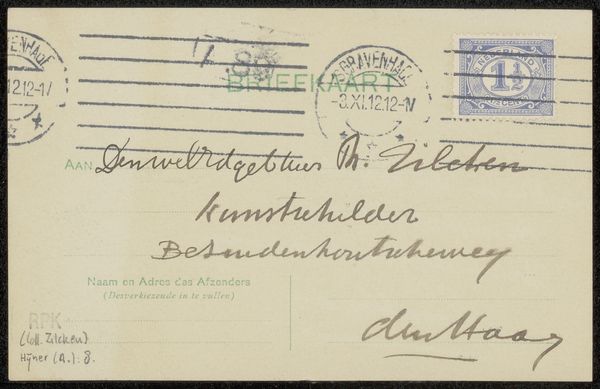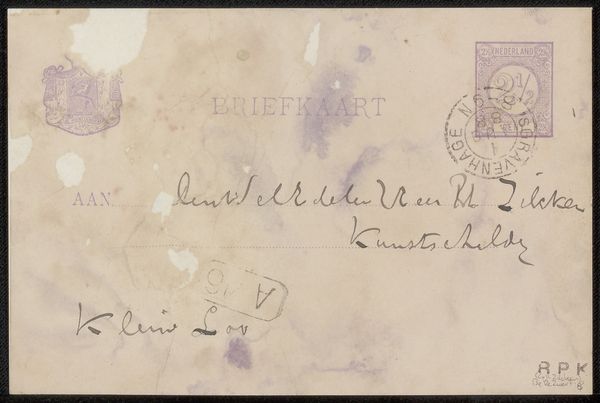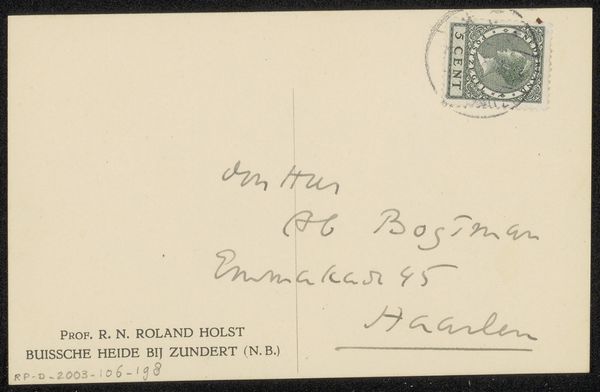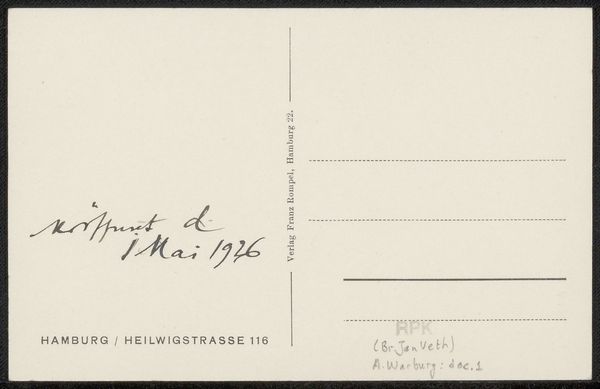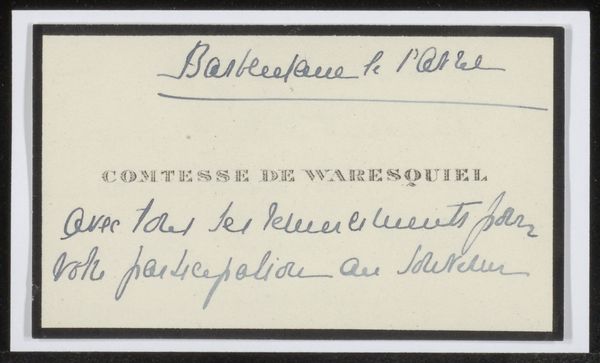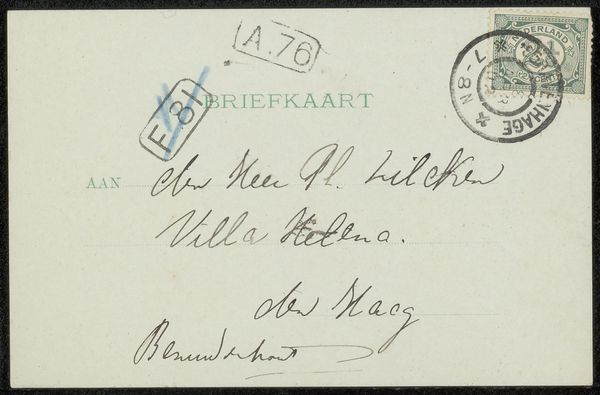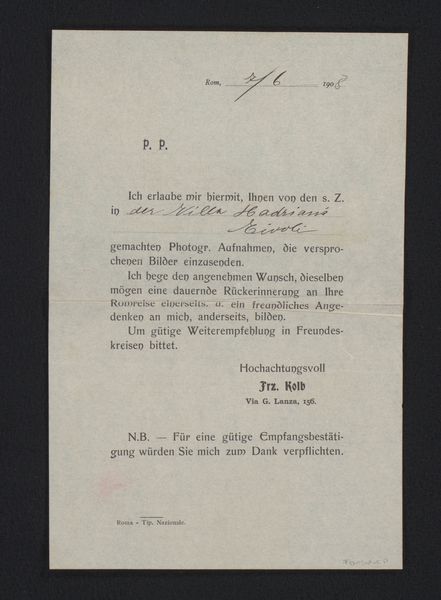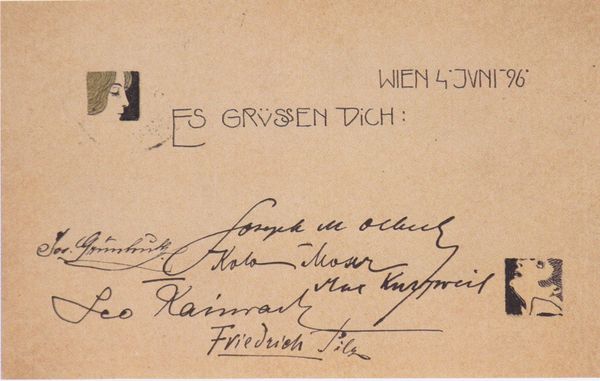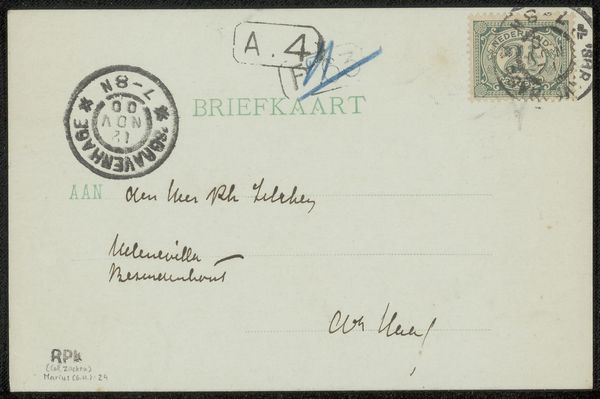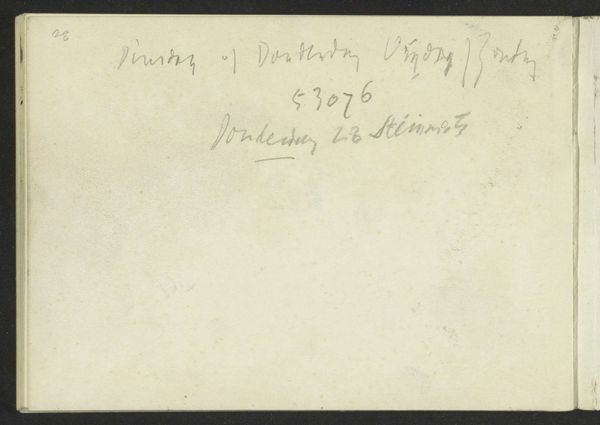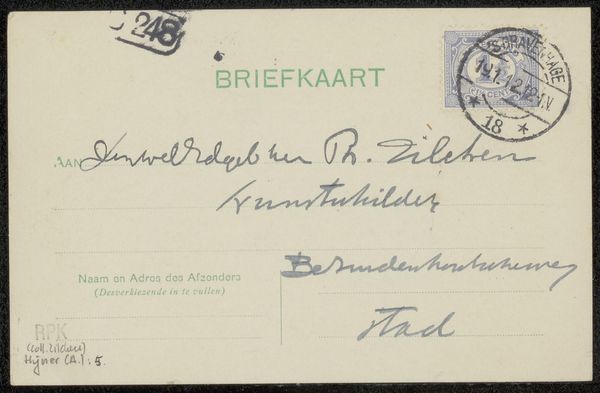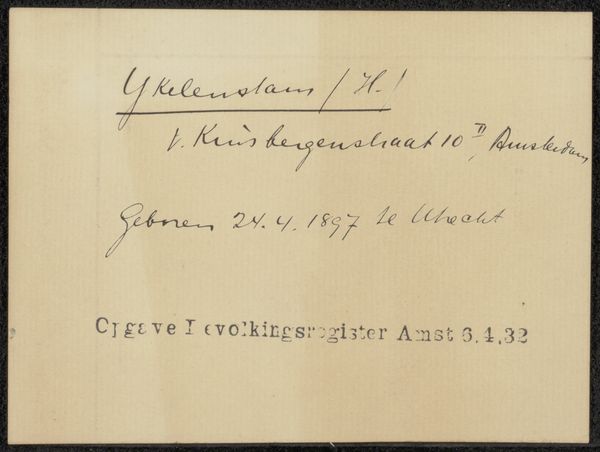
graphic-art, collage, paper, typography
#
graphic-art
#
collage
#
paperlike
#
paper texture
#
paper
#
typography
Dimensions: height 137 mm, width 90 mm, height 240 mm, width 190 mm
Copyright: Rijks Museum: Open Domain
Curator: An envelope with loose photos, a piece listed under Blankenburg & Luca and created between 1943 and 1944. It looks like the artist mainly employed graphic arts in this piece. What strikes you most at first glance? Editor: It feels fragile, like something precious carefully tucked away. The texture of the paper, almost like a tracing sheet, gives it this incredible sense of temporal thinness, of a moment barely preserved. Curator: Considering the period, between 1943 and 1944, the use of this German typography catches my eye. We know paper wasn't just paper then; its acquisition, even the method of its making, was deeply embedded in a system of control, resource management and ultimately, labor. Editor: Absolutely, seeing 'Deutsche Bundesbahn' on it immediately frames the image within a very specific political and historical context. One has to ask what these photographs were of. Who handled the paper, who printed the type? It's a stark reminder of the role these seemingly neutral elements can play. Curator: Precisely. By choosing this particular paper material from "Deutsche Bundesbahn", it introduces layers of meaning concerning wartime labor and Nazi Germany's transportation network. The decision elevates the material to being more than a simple carrier—it becomes active in creating an intricate system that binds this set of photos with their specific timeframe. Editor: Thinking about the role of transport in war adds another dimension. Railways were vital for mobilizing troops and resources but also, devastatingly, for deportation. This adds an even more sorrowful tone and questions what the purpose of these photos might have been. Who or what was this envelope carrying and why? Curator: Exactly. The act of archiving becomes politically charged through its means. It moves beyond personal and emotional levels, prompting introspection around ethical material selection. It makes us consider who we consume and how that intake shapes socio-historical understanding. Editor: Indeed. It encourages one to be inquisitive and ask hard questions, and remember that sometimes the simplest, seemingly most ordinary objects are full of resistance and memories. It will remain etched in memory as a piece that makes an eloquent testament on this period. Curator: Right. It makes us acutely aware of material as a product and an agent. It's through considering processes, like selection and association that these hidden yet potent narratives emerge.
Comments
No comments
Be the first to comment and join the conversation on the ultimate creative platform.
